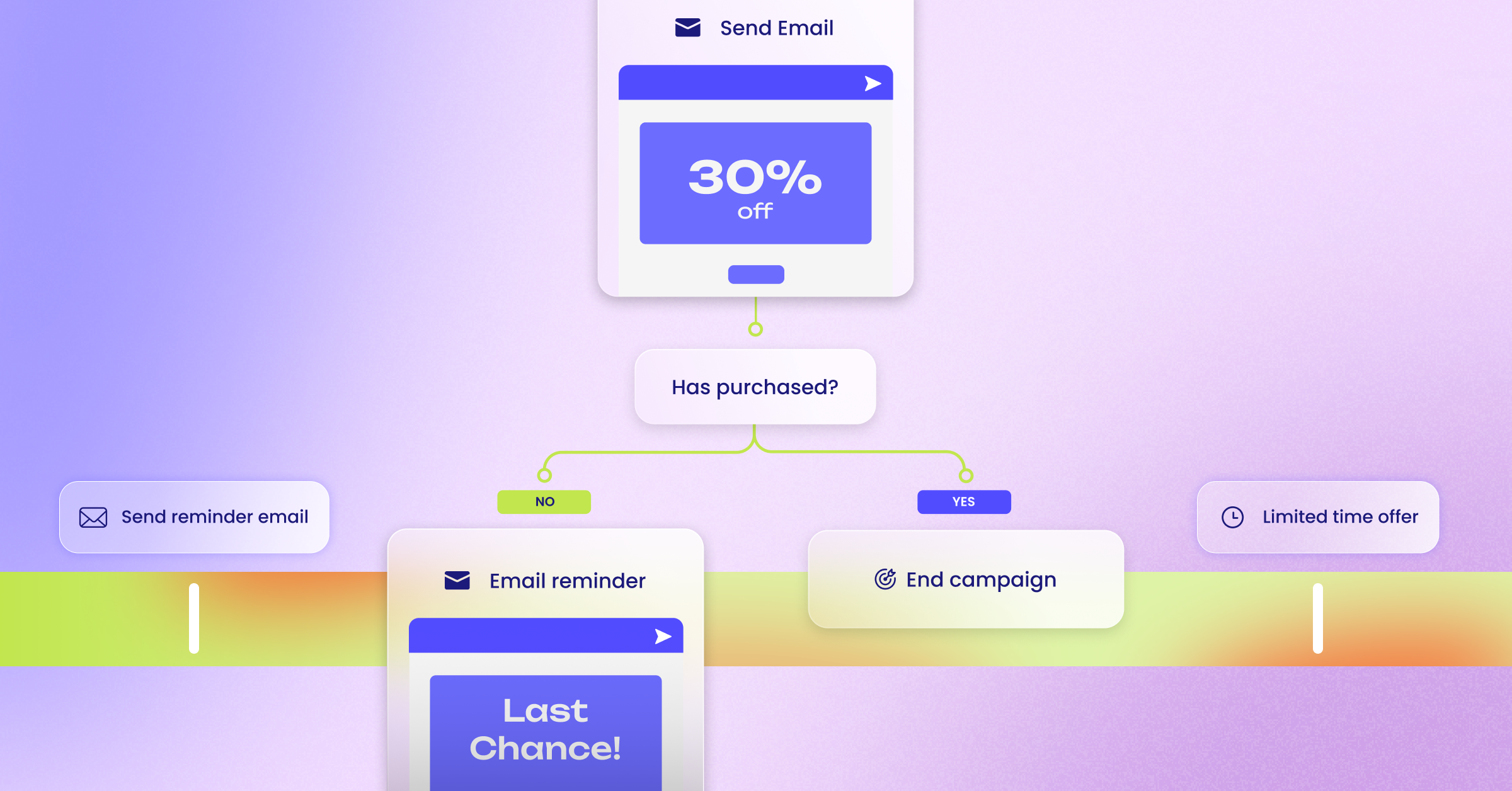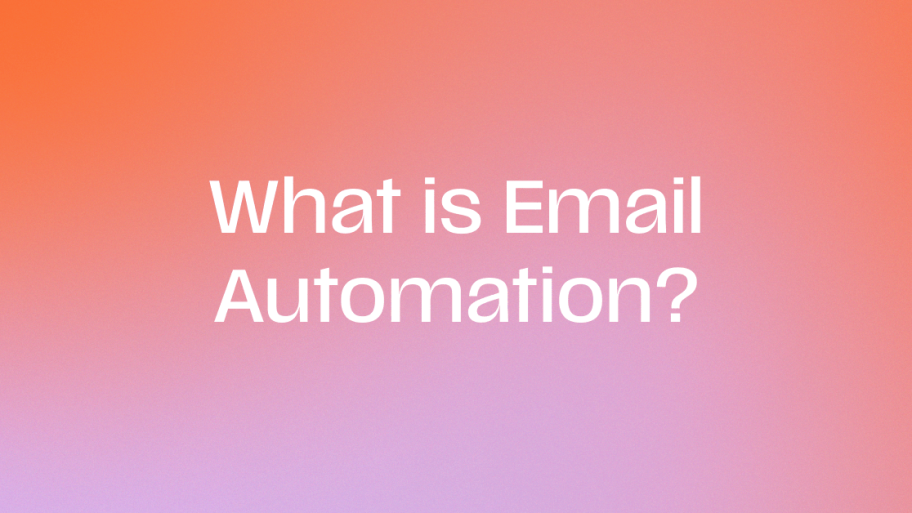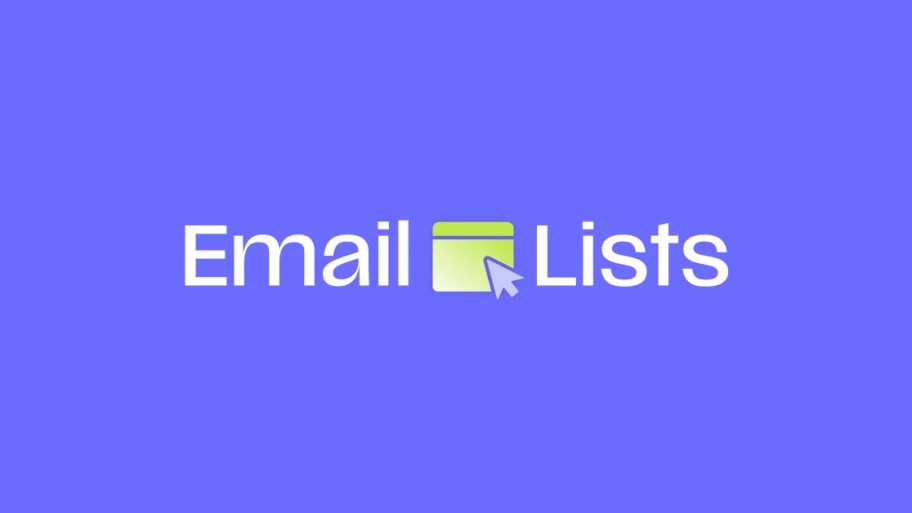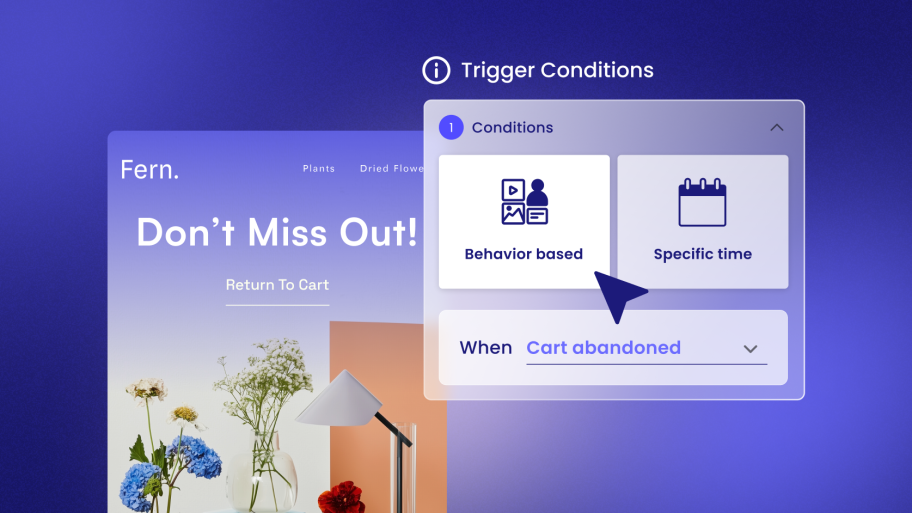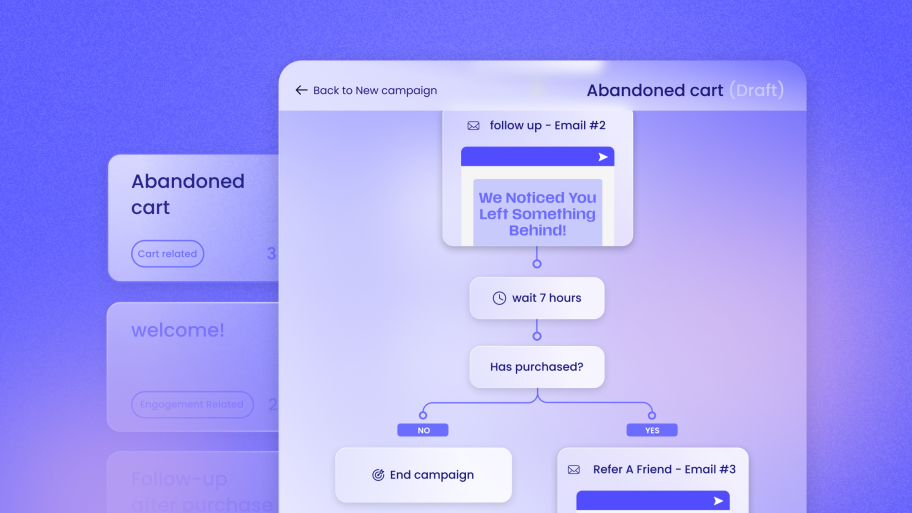Why Timing Isn’t Just a Suggestion—It’s a Strategy
In today’s digital world, your customers’ inboxes are busier than ever. Standing out requires a thoughtful approach that goes beyond just what you say and dives into when you say it. Let’s break down why nailing your send time is so important.
The Rising Cost of Reaching the Inbox
No matter your industry, you’ve likely noticed that getting your customers’ attention is becoming increasingly challenging. With more brands competing for a limited amount of space, rising costs, and privacy changes affecting how you can target shoppers, you need to find more innovative ways to connect. For many businesses, especially smaller ones, simply spending more on advertising isn’t a sustainable solution.
This is where strategic timing comes in. When you send your newsletter at the optimal moment, you maximize the impact of every single email. You’re not just sending content; you’re delivering it when your audience is most likely to be engaged, increasing the return on the time and resources you’ve already invested.
Beyond Open Rates: The Real Goals of Your Newsletter
It’s easy to get fixated on open rates, but they only tell part of the story. A successful newsletter does more than just get opened. Its fundamental purpose is to drive action. Are you trying to bring readers back to your latest blog post? Announce a new product? Boost sales with a limited-time offer?
The time you send your email directly influences these deeper metrics. For example, a customer might open an email on their phone while in a meeting, but won’t have the time to click through and make a purchase. Sending that same email during their lunch break or in the evening could lead to a completely different outcome. The goal is to align your send time with the moments your audience is ready to act, turning a simple open into a valuable conversion.
The Impact of a WordPress-Native Approach
Wrestling with complicated, disconnected marketing tools can make implementing a smart timing strategy feel like a chore. Juggling different platforms, trying to sync data, and dealing with potential plugin conflicts can add unnecessary friction to your workflow.
What if your communication tools were built specifically for the environment you already work in? A toolkit designed for WordPress can remove these headaches. When your email and SMS marketing, automation, and analytics are all integrated seamlessly within your WordPress dashboard, you can focus on what matters: crafting a great message and delivering it at the perfect time. This streamlined approach makes it easier to schedule campaigns, track performance, and make data-driven decisions without ever leaving your site.
Decoding the Data: General Benchmarks for Newsletter Timing
While the perfect send time is unique to your audience, industry benchmarks provide a fantastic starting point. Think of these as well-researched hypotheses you can test. Let’s explore the generally accepted best days and times to send a newsletter.
The Best Days of the Week: A Starting Point
For years, marketers have analyzed data to find the days when subscribers are most receptive. While every audience is different, a clear pattern has emerged for most B2B and B2C brands.
- Tuesday: Often considered the best day. By Tuesday, people have cleared out their weekend backlog and are settled into their work routine.
- Wednesday: Another strong contender. Mid-week engagement is typically high as people are in the flow of their work but not yet looking toward the weekend.
- Thursday: A solid choice, especially for B2C brands. People are starting to plan their weekends, making them more open to promotions for events, shopping, or leisure activities.
What about Monday and Friday? Mondays are usually dedicated to catching up from the weekend and planning the week, making inboxes a crowded and competitive space. On Fridays, people are often wrapping up tasks and shifting their focus to the weekend, which can lead to lower engagement.
Here’s a simple breakdown of how the days generally stack up:
| Day of the Week | General Performance | Rationale |
| Monday | Fair | People are busy catching up; inboxes are crowded. |
| Tuesday | Excellent | The work week is underway; inboxes are cleaner. |
| Wednesday | Excellent | Peak productivity and engagement for many. |
| Thursday | Very Good | People are planning for the weekend. |
| Friday | Fair to Good | Attention starts to shift away from work. |
| Saturday | Varies | Suitable for specific B2C niches, but not suitable for B2B. |
| Sunday | Varies | Can be effective for relaxed, content-focused sends. |
The Golden Hours: Pinpointing the Best Times of Day
Once you’ve picked a day, the next step is to choose a time. Just like with the days of the week, specific time slots tend to perform better than others. These “golden hours” align with the typical daily routines of most people.
- 10:00 AM: This is often cited as the top time to send an email. By 10 AM, most people have had their coffee, cleared out urgent messages, and are ready to look at new emails. It hits that sweet spot right before lunch when people are still focused and productive.
- 2:00 PM: The post-lunch slump is real. Many people use this time for lighter tasks, including browsing their inbox for engaging content. Sending an email around 2 PM can capture your audience during this natural break in their day.
- 8:00 PM: Don’t underestimate the power of the evening send. After dinner, many people relax by scrolling on their tablets or phones. This is a prime time to reach B2C customers, especially for eCommerce stores, as people have more time to browse and shop.
What About Weekends?
Sending newsletters on the weekend is a topic of much debate. For most B2B companies, weekends are a no-go. Your audience has likely logged off for the week, and your email will be buried by Monday morning.
However, for B2C brands, the weekend can be a hidden gem. If your newsletter is focused on hobbies, entertainment, or retail, sending it on a Saturday morning or Sunday evening could be highly effective. People have more leisure time and may be more receptive to content that aligns with their interests. The key is to make sure your content feels like a welcome read, not an interruption.
Moving Beyond Benchmarks: How to Find Your Best Time
General benchmarks are a great place to start, but the real magic happens when you tailor your timing to your specific audience. The data you collect from your subscribers is far more valuable than any industry report. Here’s how you can move from educated guesses to data-driven decisions.
The Most Important Factor: Knowing Your Audience
You wouldn’t try to sell snow gear in the desert, so why send an email when you know your audience is busy? Understanding the daily lives and routines of your subscribers is the most critical factor in finding your best send time.
Defining Your Audience Segments
Not all of your subscribers are the same. Grouping contacts based on their behavior, demographics, and purchase history is a powerful way to deliver more relevant messages. This practice, known as audience segmentation, is also key to perfecting your send time.
Consider these different audience types and how their schedules might differ:
- B2B Professionals: Likely to check their email during standard business hours (9 AM – 5 PM).
- College Students: May have erratic schedules and could be more active late at night.
- Stay-at-Home Parents: Might be most active mid-morning after school drop-off or in the afternoon during nap time.
- International Customers: Live in different time zones, making a one-size-fits-all send time ineffective.
By creating distinct segments, you can start to tailor your send times to fit the unique rhythm of each group, ensuring your message arrives at a convenient moment.
Leveraging Your Data for Insights
The best answers are already in your hands. Your past campaign data is a goldmine of information about when your audience is most engaged. But to access these insights, you need the right tools.
Using a platform that offers real-time analytics directly within your WordPress dashboard can be a game-changer. Instead of exporting data and trying to connect reports from different systems, you can see exactly how your campaigns are performing at a glance. Look for patterns in your open and click-through rates. Do emails sent on Tuesday mornings consistently outperform those sent on Thursday afternoons? This data provides the clues you need to refine your strategy.
The Power of A/B Testing Your Send Times
Once you’ve analyzed your existing data and formed a hypothesis, it’s time to test it. A/B testing is a straightforward method for comparing two versions of something to see which one performs better. In this case, you’ll be testing different send times.
What is A/B Testing for Timing?
Don’t let the term intimidate you. A send-time A/B test is simple to set up. Here’s a step-by-step guide:
- Choose an Audience Segment: Start with a meaningful portion of your subscriber list.
- Split the Segment: Divide this group into two equal, random halves. Let’s call them Group A and Group B.
- Schedule Your Send: Send the same newsletter to both groups, but at different times. For example, send it to Group A at 10 AM on Tuesday and to Group B at 2 PM on Tuesday.
- Analyze the Results: After a day or two, compare the performance of the two emails. Which one had a higher open rate? Which one drove more clicks?
Running these tests consistently will help you zero in on the optimal send time for your audience with confidence.
Key Metrics to Track in Your Tests
When you analyze your A/B test results, look beyond just one number. Each metric gives you a different piece of the puzzle.
- Open Rate: This tells you how effective your subject line and send time were at capturing initial attention. A higher open rate suggests the time was convenient.
- Click-Through Rate (CTR): This is more important than the open rate. It shows how many people who opened your email also took the next step and clicked a link. A high CTR indicates that your audience was truly engaged, not just glancing at their inbox.
- Conversion Rate: This is the ultimate measure of success. It tracks how many people completed the desired action, such as making a purchase, filling out a form, or downloading a resource.
- Unsubscribe Rate: Keep an eye on this number. A spike in unsubscribes could indicate that your timing felt intrusive or your content wasn’t relevant.
The Role of Automation in Perfecting Your Timing
What if the best time to send an email wasn’t tied to the clock at all? Marketing automation allows you to send messages based on a user’s specific actions, making your communication incredibly timely and relevant.
Instead of sending a single newsletter to everyone at once, you can set up pre-built workflows like Abandoned Cart reminders, Welcome Series, and Re-engagement campaigns. These automated emails are triggered by what a user does (or doesn’t do) on your site. For example, a welcome email is sent immediately after someone signs up, and an abandoned cart email is sent a few hours after a shopper leaves items behind.
This approach shifts the focus from “what time is it?” to “what is the customer doing right now?” A toolkit that is native to WordPress can make setting up these automations incredibly simple, allowing you to create powerful, behavior-based campaigns with just a few clicks.
Advanced Timing Strategies for WooCommerce Stores
For WooCommerce store owners, email timing can be a powerful lever for driving revenue. By connecting your send strategy directly to a customer’s shopping behavior, you can create highly personalized and effective campaigns that boost both sales and loyalty.
Trigger-Based Emails: The Ultimate Personalization
Trigger-based emails are sent automatically in response to a specific action a customer takes on your site. Because they are directly related to a recent interaction, they are highly relevant and often see much higher engagement rates than standard newsletters.
- Abandoned Cart Reminders: A staggering number of online shopping carts are abandoned before checkout. Sending a timely reminder can recover a significant portion of this lost revenue. A typical and effective timing sequence is to send the first reminder about one hour after abandonment, followed by a second one 24 hours later. This gives the customer a gentle nudge without being pushy.
- Post-Purchase Follow-ups: The conversation shouldn’t end once a purchase is made. Sending a follow-up email a few days after a product has been delivered is a perfect opportunity to ask for a review, suggest complementary products, or offer a discount on a future purchase. This not only provides valuable social proof but also encourages repeat business.
- Welcome Series: When a new customer subscribes to your list, you have a golden opportunity to make a great first impression. A welcome series can introduce them to your brand, highlight your best-selling products, and offer a small incentive to make their first purchase. A simple three-part series could be timed like this:
- Email 1 (Immediately): Welcome them and deliver any promised discount.
- Email 2 (2 Days Later): Share your brand story or showcase your most popular products.
- Email 3 (4 Days Later): Offer helpful content or social proof, like customer testimonials.
Using Segmentation for Hyper-Targeted Timing
You can take your timing strategy to the next level by combining automation with advanced audience segmentation. By grouping customers based on their purchase history and engagement level, you can send them promotions at the most impactful moments.
Here are a few practical examples:
- VIP Customers: These are your most loyal and valuable shoppers. Reward them by sending early access to sales and new product launches before you announce them to your general list. This makes them feel valued and encourages continued loyalty.
- Inactive Subscribers: Have a group of customers who haven’t purchased in a while? Target them with a special re-engagement offer. Try sending it on a Saturday morning or Sunday evening when they have more leisure time to browse and be tempted by a good deal.
- Geographic Segments: If you have customers in different parts of the world, scheduling your campaigns based on their local time zone is essential. Sending an email at 10 AM EST is not ideal for a customer in California, let alone one in London.
An integrated communication toolkit makes this kind of advanced segmentation simple. When your email platform can pull data directly from WooCommerce, you can easily create dynamic segments based on purchase history, average order value, and more, all without needing to export and import lists manually.
The Right Toolkit for the Job: Why Integration Matters
Your strategy is only as good as the tools you use to execute it. Trying to piece together a collection of disconnected marketing tools can create more problems than it solves, leading to wasted time, data silos, and a clunky workflow.
The Problem with Disconnected Tools
When your email platform, SMS provider, and analytics tool don’t talk to each other, it creates significant challenges. You might face issues with data syncing, plugin conflicts, and a fragmented view of your customer journey. This makes it incredibly difficult to implement the kind of sophisticated timing and segmentation strategies we’ve discussed. You spend more time managing your tech stack and less time focusing on your customers.
The Advantage of a WordPress-Native Solution
This is where a solution built from the ground up for WordPress and WooCommerce truly shines. A WordPress-native toolkit eliminates the friction caused by third-party platforms, creating a smooth and efficient workflow right inside the environment you know best.
Here are some of the key benefits:
- Seamless Integration: Everything just works. With a familiar user interface and no complex APIs to manage, you can get up and running quickly and avoid the common compatibility issues that plague external tools.
- All-in-One Toolkit: Imagine having your Email, SMS, Automation, Segmentation, and Analytics all in one place. This consolidation reduces your reliance on multiple plugins and subscriptions, simplifying your tech stack.
- Effortless Management: An intuitive interface, combined with pre-built automation templates for tasks such as abandoned carts, makes ongoing management a breeze. You can set up powerful campaigns and let them run without constant oversight.
- Clear ROI: With real-time analytics displayed directly in your WordPress dashboard, you can instantly see what’s working. This makes it easy to track your performance, refine your strategy, and demonstrate the value of your marketing efforts.
A Practical Look: How Send by Elementor Simplifies Timing
For web creators and WooCommerce store owners, a tool like Send by Elementor is designed to address these specific needs. It’s a comprehensive communication toolkit that empowers you to implement sophisticated strategies with ease.

- Drag-and-Drop Email Builder: Quickly create professional, responsive emails without touching a line of code.
- Ready-Made Templates: Get a head start with templates designed using Elementor’s best practices.
- Advanced Audience Segmentation: Easily group contacts based on their behavior, demographics, or WooCommerce purchase history for precisely targeted messaging.
- Robust Automation Flows: Implement pre-built workflows for welcome series, abandoned carts, and re-engagement campaigns to send the right message at the right time, automatically.
By bringing all these capabilities into WordPress, Send by Elementor helps you go beyond just building websites. It allows you to offer ongoing marketing value, boost your clients’ growth, and build stronger, long-term relationships.
Putting It All Together: Your 2025 Newsletter Timing Checklist
Feeling ready to find your perfect send time? Here is a simple checklist to guide you through the process. Follow these steps to move from general benchmarks to a fine-tuned, data-driven timing strategy.
- [ ] Review Your Current Data: Dive into your past campaign reports. Look for any existing patterns in open and click rates related to the day of the week or time of day.
- [ ] Define Your Primary Audience Segments: Who are your key customer groups? List them out and consider their likely daily routines.
- [ ] Establish Your Goals: For each newsletter, be clear about what you want to achieve. Is it driving traffic, generating leads, or making sales?
- [ ] Choose a Benchmark to Start: Pick a day and time based on the general best practices we discussed (e.g., Tuesday at 10 AM) as your starting point.
- [ ] Plan Your First A/B Test: Schedule a test to compare your benchmark time against another promising time slot (e.g., 10 AM vs. 2 PM).
- [ ] Set Up At Least One Automated Flow: Don’t wait to get started with automation. A simple Welcome Series or Abandoned Cart reminder can provide immediate value.
- [ ] Leverage an Integrated Toolkit: Make sure your tools are working for you, not against you. A unified platform within WordPress will save you time and provide clearer insights.
- [ ] Analyze, Iterate, and Repeat: Finding the best send time is an ongoing process. Continuously monitor your results, test new hypotheses, and refine your approach.
Conclusion: Making Time Work for You
In the competitive landscape of 2025, sending your newsletter at the right time is more critical than ever. While industry benchmarks offer a valuable starting point, the truth is that there is no single “best time” that works for everyone. The optimal moment to reach your audience depends entirely on who they are, where they live, and how they interact with your brand.
By taking a data-driven approach—knowing your audience, running consistent A/B tests, and harnessing the power of automation—you can move beyond guesswork and discover the send times that deliver real results.
Ultimately, perfecting your timing is about more than just boosting your open rates. It’s about respecting your subscribers’ time, delivering value at the most convenient moments, and building stronger, more engaged relationships. With the right strategies and a seamlessly integrated toolkit, you can turn your newsletter into a powerful engine for growth, driving sales and fostering loyalty for years to come.
